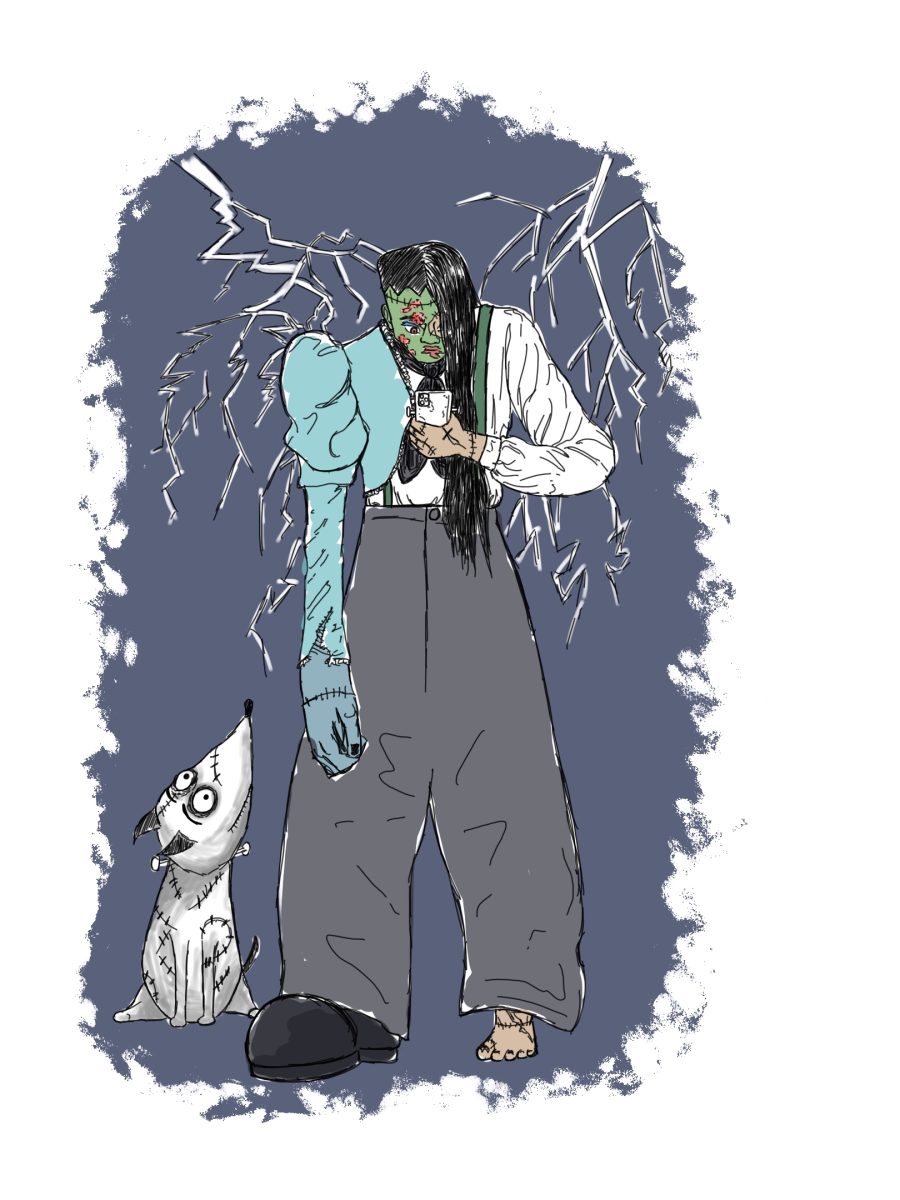Mary Shelley invented the science fiction genre at 19 when she published the classic horror novel “Frankenstein” in 1818. Authors, filmmakers and artists continue to interpret her work to this day.
“Frankenstein,” also known as “The Modern Prometheus,” follows the story of Victor Frankenstein as he defies the laws of nature and pushes towards science, creating his ultimate downfall: the monster. The classic novel has inspired countless interpretations over the years, and the monster from “Frankenstein” is a recognizable figure in the modern consciousness. Although images of a mad scientist shouting “It’s alive!” may come to mind at the thought of Frankenstein, themes like the dangers of ambition and human nature are all covered in the novel.
“Pick a theme and it’s in there. What’s so amazing about the text is that there’s so many different ways you can read it,” Katherine Troyer, director of the Collaborative for Learning and Teaching, said.
Troyer is an avid horror enthusiast. She currently teaches Topics in Horror and has also previously taught the Science Fiction FYE. Troyer noted how influential “Frankenstein” is and the power it holds in modern media to this day.
“It’s hard to say a film isn’t inspired by Frankenstein because it was a game changer,” Troyer said. Even films like “The Substance,” although not direct Frankenstein interpretations, are still inspired by the novel.
Elizabeth Glenn, first-year physics major and Science Fiction FYE student, described “Frankenstein” as one of their favorite novels. Similar to Troyer, Glenn stated that they believe “Frankenstein” explores a variety of subjects that still apply to this day.
“There are so many different interpretations you can take because the story can be applicable to so many themes and people,” Glenn said.
More recent interpretations of “Frankenstein” have included “Victor LaValle’s Destroyer,” a graphic novel that tackles “Frankenstein” with more modern socio-political tensions, and “Lisa Frankenstein,” a movie heavily inspired by campy horror movies. Although both interpretations are rather different from each other in tone and style, they both take on themes from the original novel. According to Troyer, “Victor LaValle’s Destroyer” focuses more on the themes of human nature, whereas “Lisa Frankenstein” tackles the coming-of-age narrative that’s part of the original “Frankenstein.”
However, especially in older interpretations of “Frankenstein,” the complexity of the original “Frankenstein” novel is somewhat diluted by the interpretations. Whether erasing the monster’s complex morality or ignoring the conflict Victor Frankenstein undergoes, the story can be watered down to suit a different audience. Sarah Erickson, co-director of women’s and gender studies and associate professor of communication, spoke on this issue.
“The novel is a lot more about the humans than anything else, and their struggles and what it means to be human and what our responsibilities are to each other and the things that we create,” Erickson said. “Adaptations of Frankenstein in mainstream media tend to be about the jumpscare monster.”
To Erickson, the novel “Frankenstein” isn’t the only thing influencing the modern horror genre. The way it’s been interpreted from its conception has also been largely influential on modern horror.
“Early adaptations of Frankenstein into film have been really influential in terms of the kinds of costuming we see, the kinds of makeup, and who and what we think of as monsters,” Erickson said.









